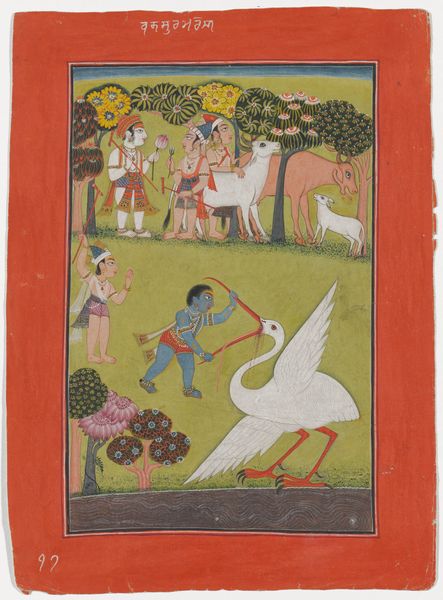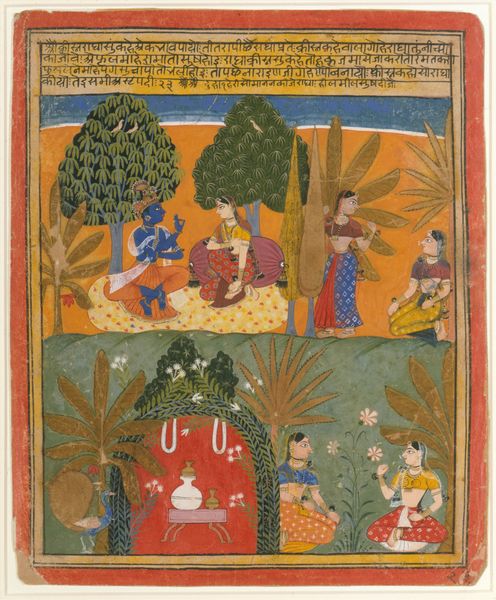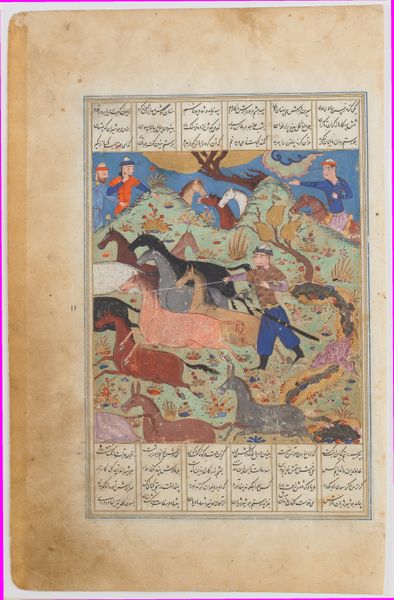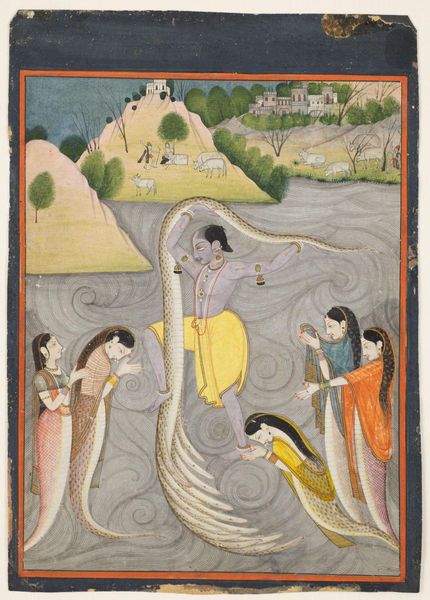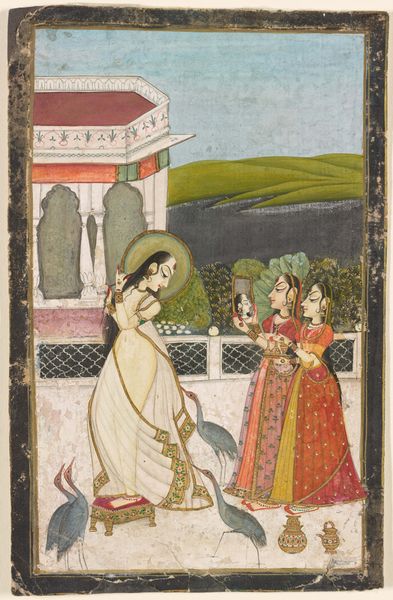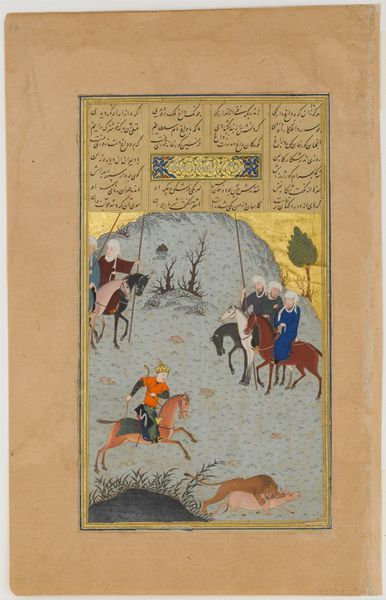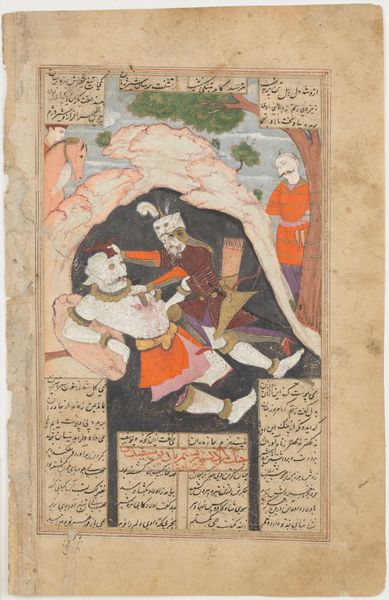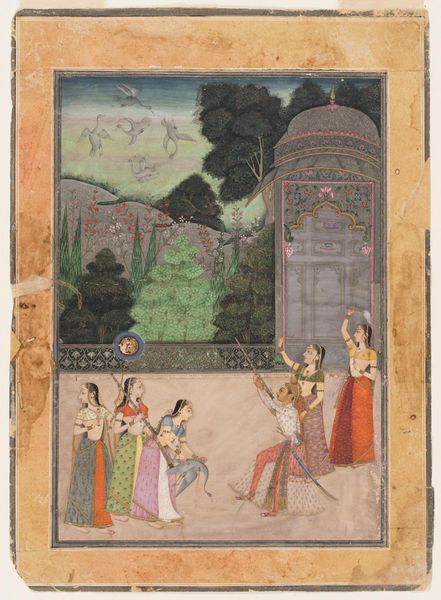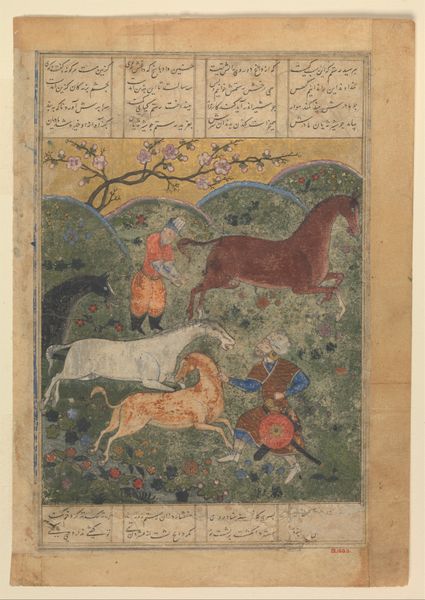
Maharana Amar Singh II Riding a Jodhpur Horse 1690 - 1720
0:00
0:00
watercolor
#
portrait
#
water colours
#
asian-art
#
landscape
#
watercolor
#
miniature
#
watercolor
Dimensions: Page: 14 11/16 x 12 1/8 in. (37.3 x 30.8 cm) Image: 13 3/16 x 10 3/4 in. (33.5 x 27.3 cm)
Copyright: Public Domain
Curator: The prevailing mood here is undoubtedly one of serene authority, isn't it? There’s a striking stillness despite the implied movement. Editor: Absolutely. We are looking at "Maharana Amar Singh II Riding a Jodhpur Horse." This watercolor work dates to sometime between 1690 and 1720. It's a captivating piece of Asian art housed here at the Metropolitan Museum. Curator: That cool blue horse against the muted landscape is arresting. Is the color naturalistic, or does it serve a symbolic purpose beyond simply depicting reality? Considering identity here, the very presentation, the controlled and somewhat ethereal portrayal, speaks volumes. It elevates the figure, setting the tone for power dynamics. Editor: Certainly. Consider the miniature form itself and the tradition it emerges from. Royal portraiture during this period, shaped by prevailing court cultures, often served as propaganda, designed to solidify the ruler's authority and lineage. Note how Maharana Amar Singh II is centered, elevated both physically on his steed and visually within the composition, his stature reinforced by attendants. Curator: It feels intentional, the stark contrast between the Maharana and his attendants, this artistic rendering highlighting inherent power dynamics, wouldn't you agree? Are they willingly supportive, or compelled through societal constructs? How can we read these power imbalances today through a contemporary lens? Editor: Precisely. This artwork offers insight into the social structures and political theater of its time. The historical context reminds us how images functioned not just as representations but as active participants in constructing and maintaining social order. The carefully depicted landscape serves not merely as background, but also as a subtle affirmation of territorial control. Curator: And seeing this piece displayed now, in a museum setting—how does the context of display alter the message of the work? We, after all, become implicated as viewers. How can we engage critically to interpret rather than simply passively consume the constructed power presented? Editor: Indeed, reflecting on the role of museums and art history itself is crucial here. As these objects are displayed, their original purpose transforms, inviting a broader, and hopefully more critically aware, public dialogue. What were initially exclusive affirmations of authority now prompt critical analyses of history and power structures. Curator: The complexity of its role as a both aesthetic object and cultural artifact, invites a deconstruction of historical contexts. Editor: I agree; engaging with these nuances allows us to use art as a catalyst for insightful conversation, looking through then, while understanding now.
Comments
No comments
Be the first to comment and join the conversation on the ultimate creative platform.




